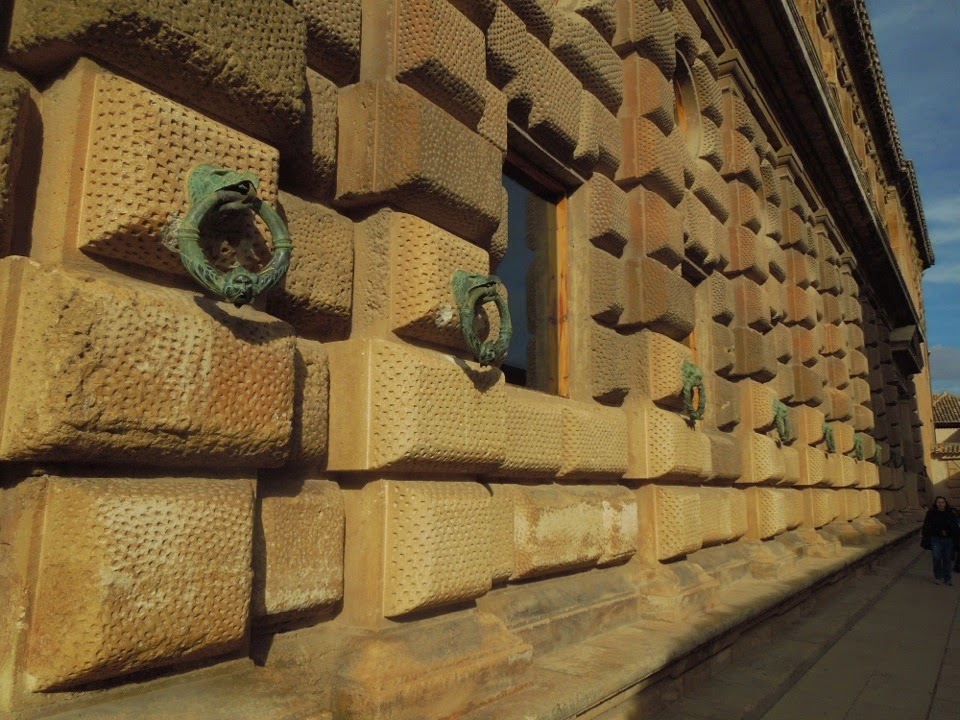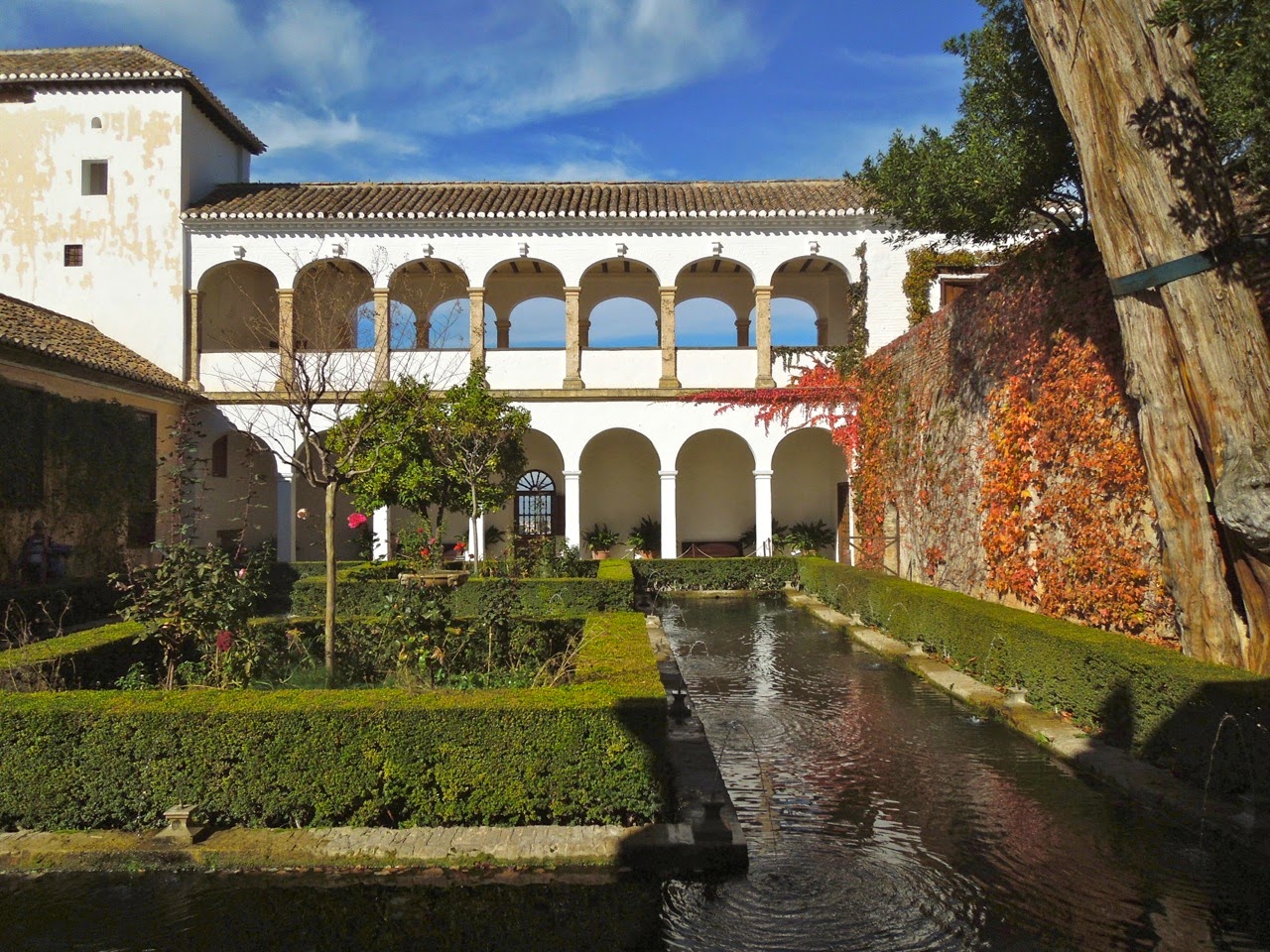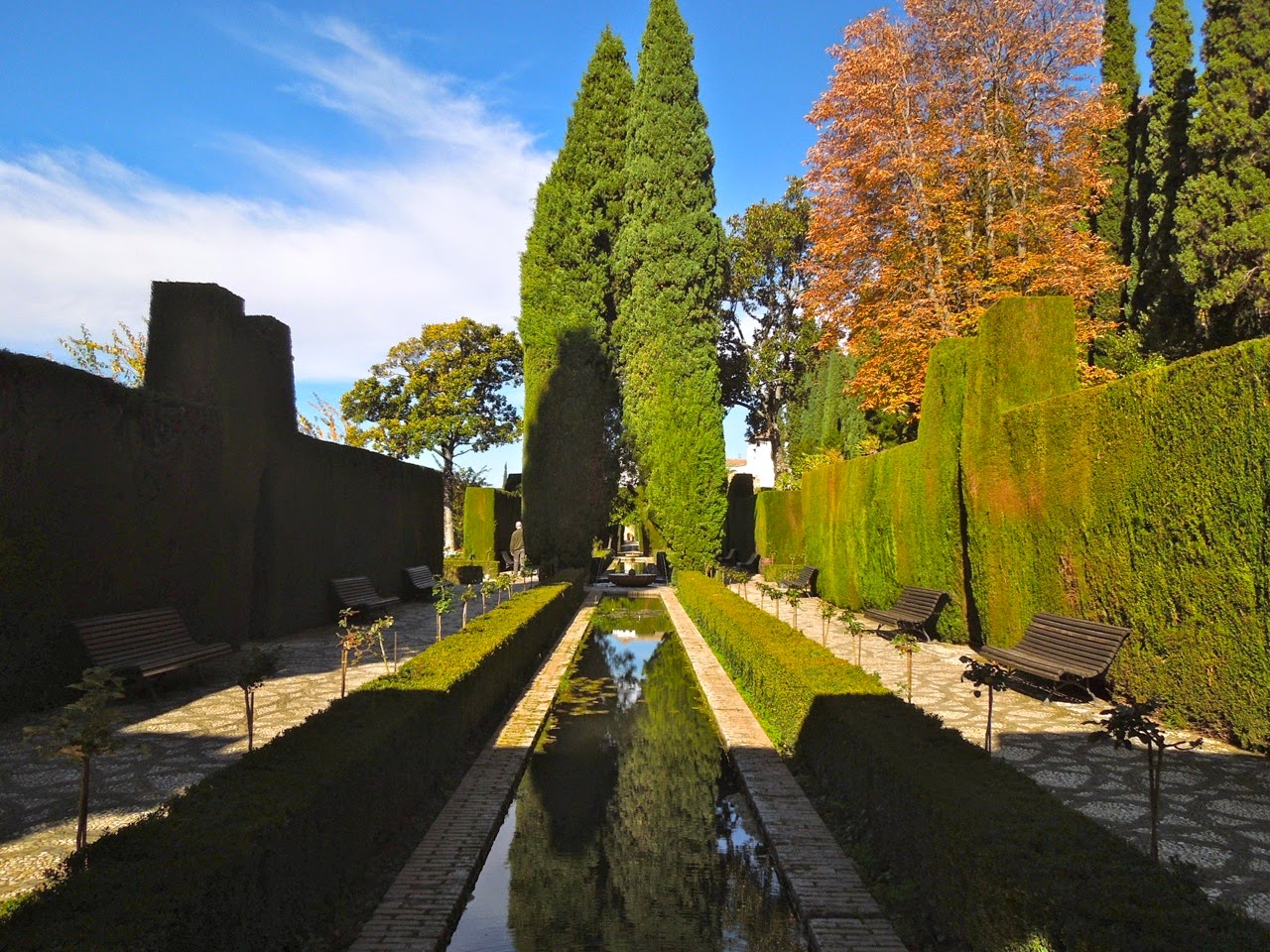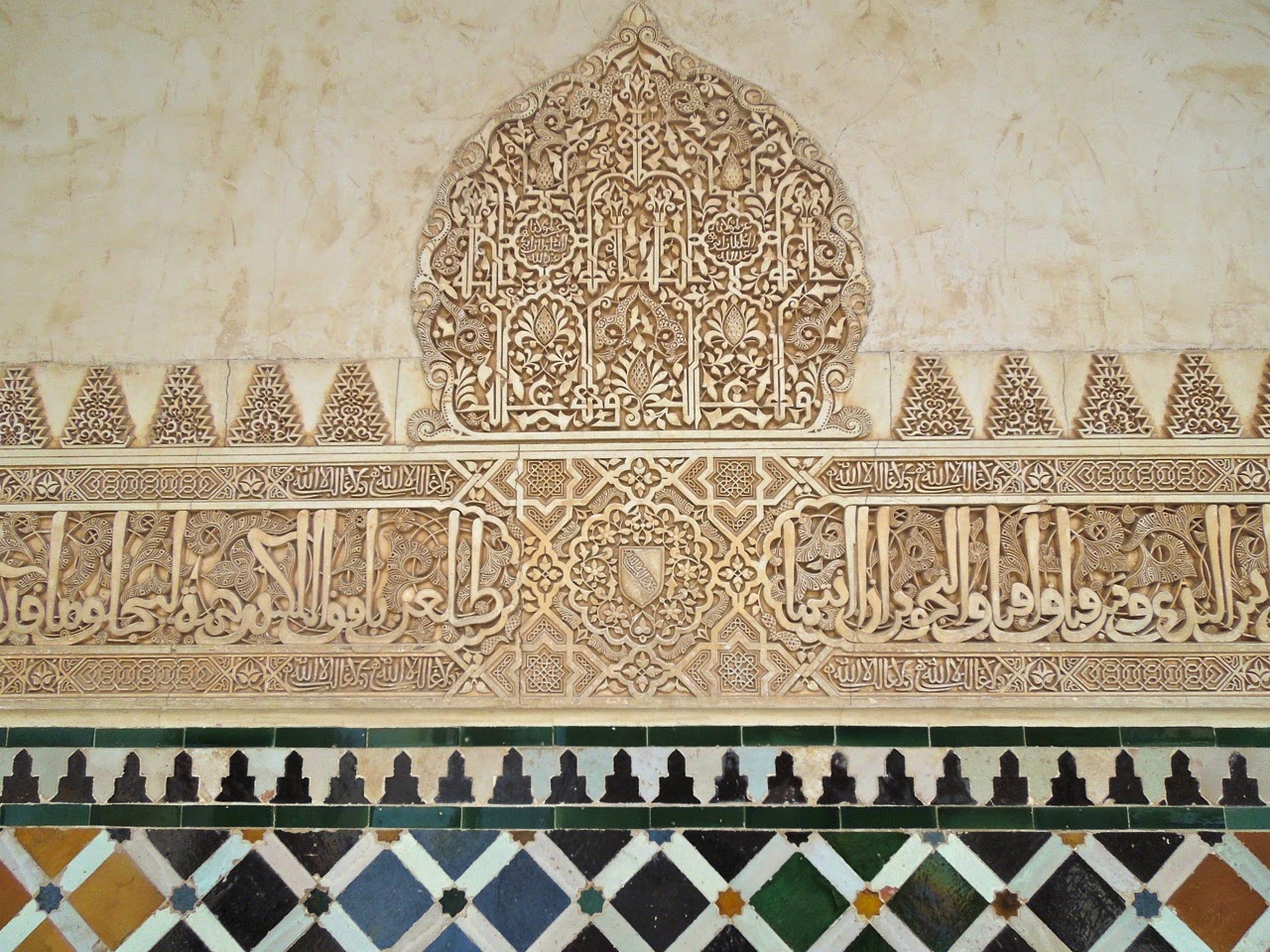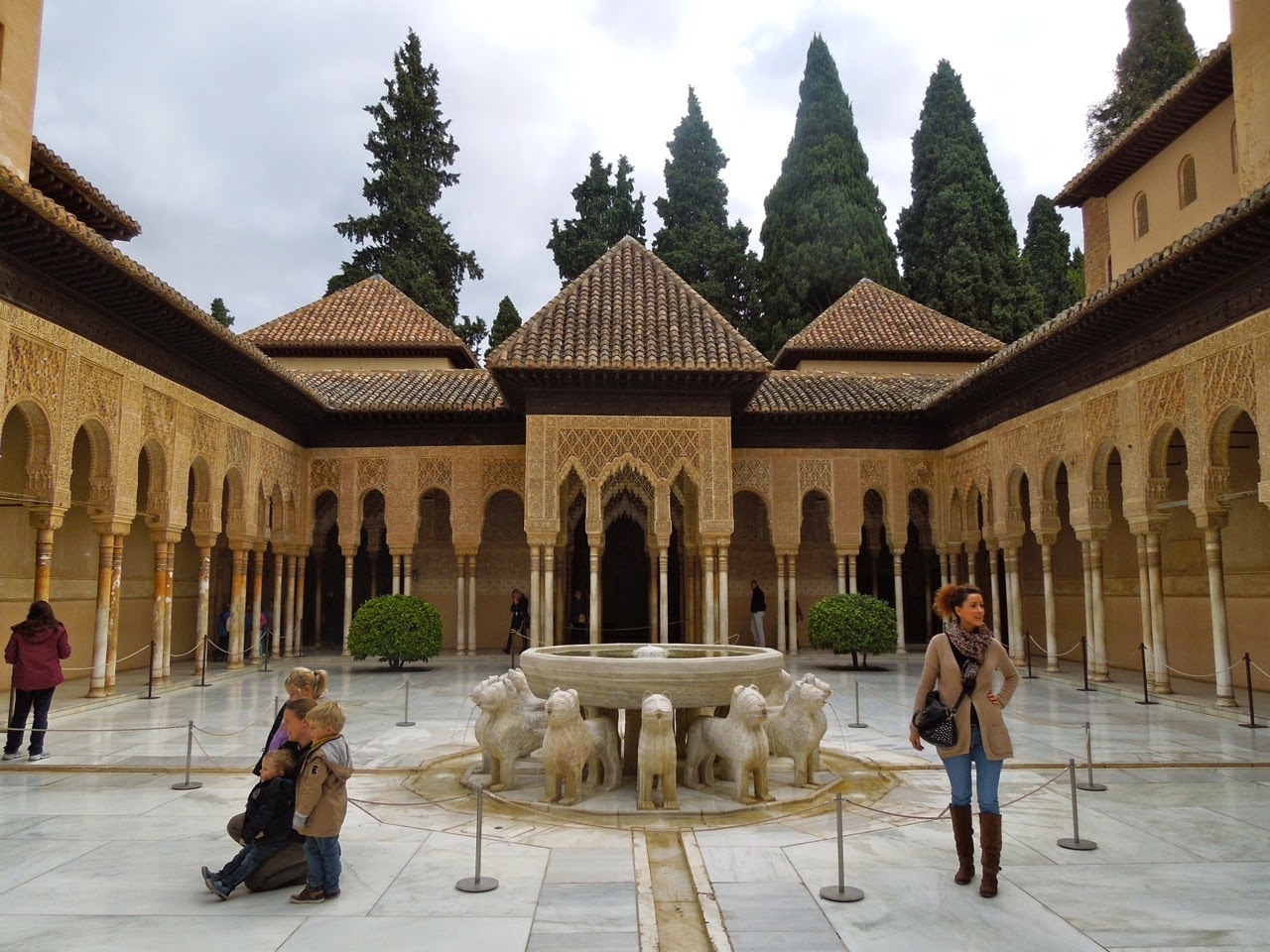Nestled into the ancient Alhambra is the Palace of Charles V which dates to the early 16th century Renaissance. This palace was modeled on ancient Roman architecture which was heavily influential at the time period. Later these Renaissance examples would come to rule and guide Classical architecture.
Lets start outside as that's what one encounters first. The strong rusticated base exudes strength but instead of small openings as in a fortress the palace is flooded with large windows and natural light. Fortification is not the primary goal here.
I love the ornate bronze rings that line the lower level. Notice the recent restoration to the stonework with the new stone crisp and clean leaving the weathered stone alone (the way it should be!).
Once inside the gardens make a complete 180. When in Rome....or Granada in this case.....cooling water features are the focus of the gardens. The gardens were actually already in place when the palace was built having been started in the 14th century (the Palacio de Generalife). They were later restored in the 1930s to their current day appearance.
Architect Pedro Machuca was responsible for the building of the Renaissance palace which took over 20 years.
The enormous round interior colonnaded patio is what really impresses me.
Notice the detailed stone work on the interior face of the wall and the beautiful Ionic columns.

In this cold winter weather here in Washington these gardens are speaking to me!
Symmetry, balance, and simplicity are key here.
The gardens terrace down the steep hillsides taking advantage of the view.
Thanks as always to my Australian Penpal for providing us with this inspiration!
Lets start outside as that's what one encounters first. The strong rusticated base exudes strength but instead of small openings as in a fortress the palace is flooded with large windows and natural light. Fortification is not the primary goal here.
I love the ornate bronze rings that line the lower level. Notice the recent restoration to the stonework with the new stone crisp and clean leaving the weathered stone alone (the way it should be!).
Once inside the gardens make a complete 180. When in Rome....or Granada in this case.....cooling water features are the focus of the gardens. The gardens were actually already in place when the palace was built having been started in the 14th century (the Palacio de Generalife). They were later restored in the 1930s to their current day appearance.
Architect Pedro Machuca was responsible for the building of the Renaissance palace which took over 20 years.
The enormous round interior colonnaded patio is what really impresses me.
Notice the detailed stone work on the interior face of the wall and the beautiful Ionic columns.
Is it any wonder that these Renaissance buildings would come to inspire artisans for 6 centuries?

In this cold winter weather here in Washington these gardens are speaking to me!
Symmetry, balance, and simplicity are key here.
The gardens terrace down the steep hillsides taking advantage of the view.
Thanks as always to my Australian Penpal for providing us with this inspiration!




